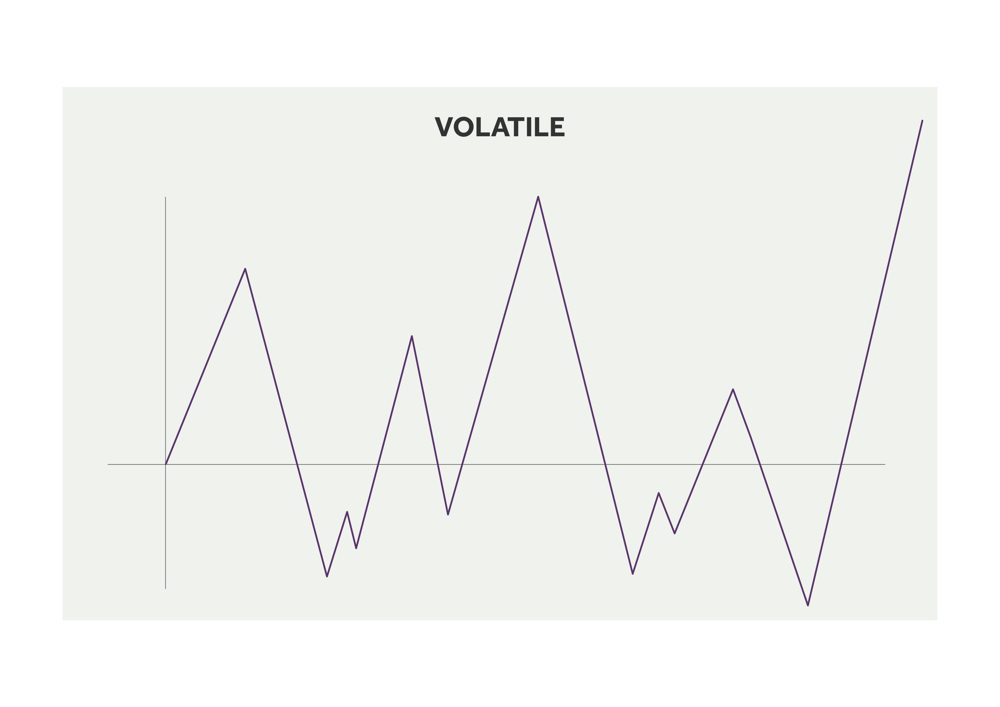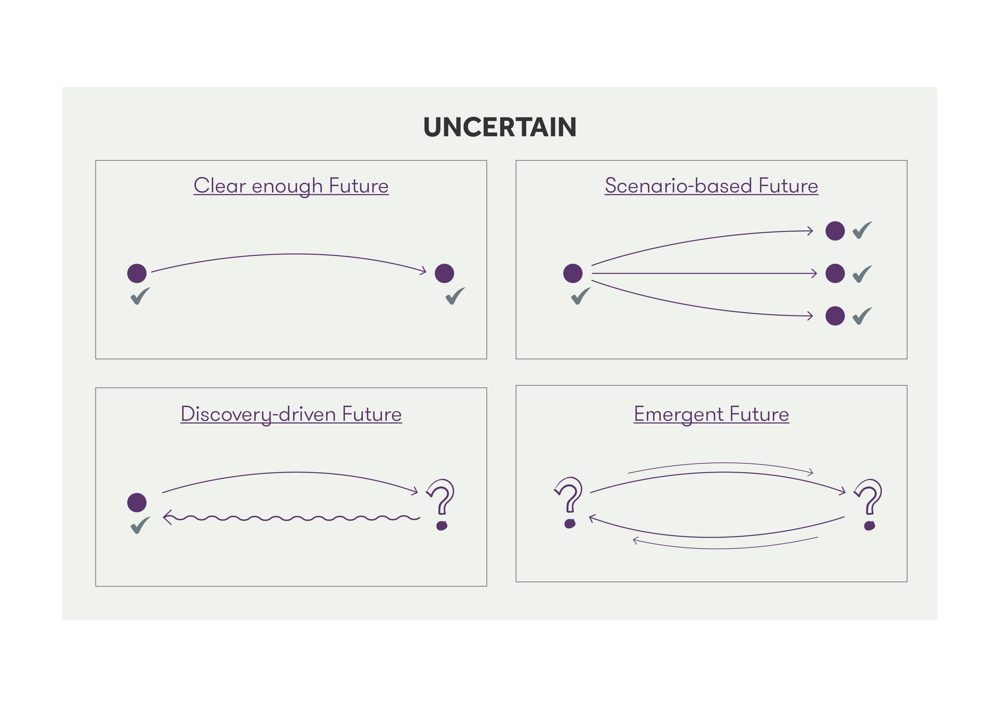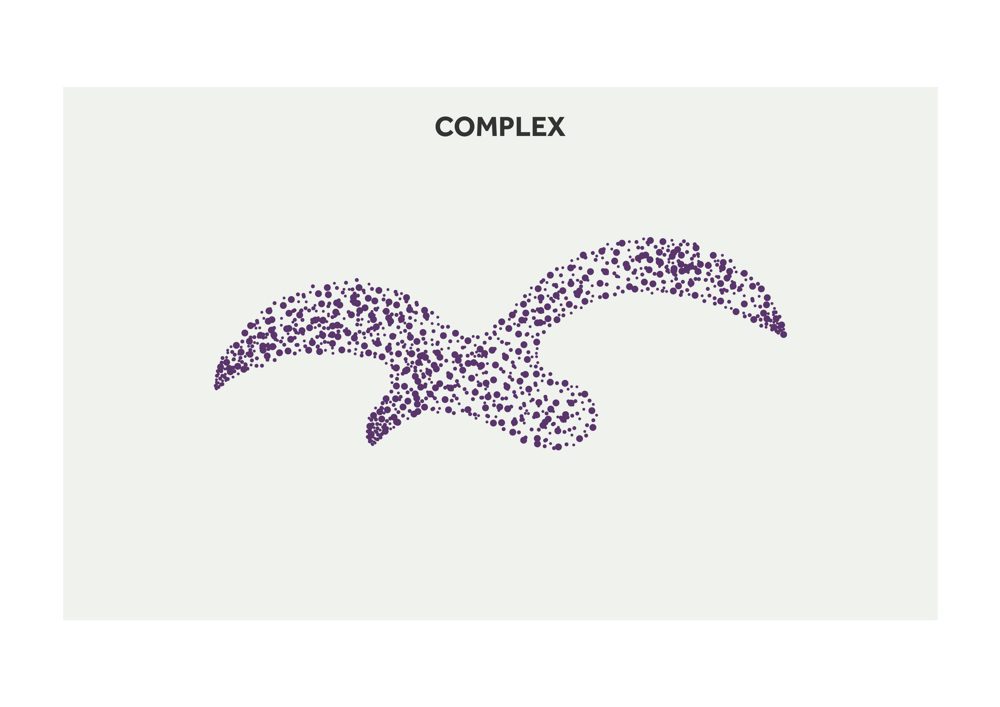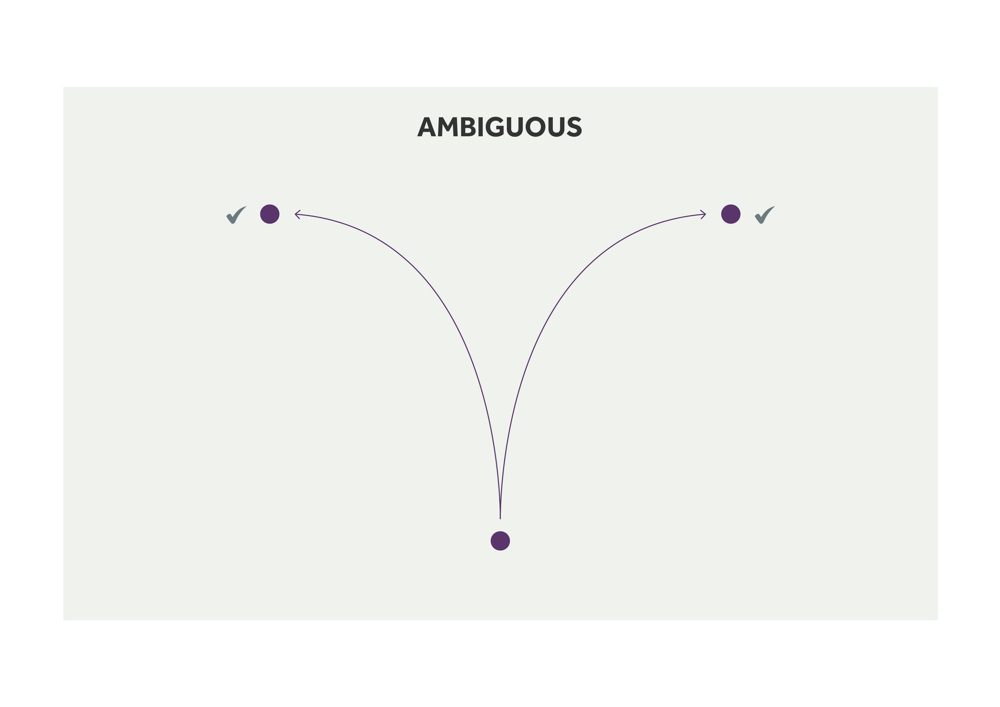Authors: Markus Peschl & Michal Matlon
Picture: Drew Dau
Looking back at 2020, there is no doubt that we live in a VUCA world. The acronym first coined in the army is now widely applied to business and society. It describes a world which is volatile, uncertain, complex and ambiguous. But what do those terms mean? And how do they affect our organizations?
Volatile: High levels of instability and change
Volatility describes the speed of change in a certain situation. For example, stock markets are volatile, with companies sometimes losing even 30% of their value in a matter of days. Same goes for weather. When something is volatile, it’s unstable and often unpredictable. The situation doesn’t have to be complicated or too difficult to understand. But the higher the volatility, the lower is our ability to predict what comes next. This means a lot of risk.
Because of that, volatile situations and environments are often seen as negative. They defy our need for control. However, in the long term, volatility brings unexpected opportunities for innovation. It breaks up existing patterns and routines, opening up the space for novelty.

Uncertain: Lack of knowledge about the impact of our actions
Uncertainty refers to events, in which we don’t have enough information to predict their outcome. Such events don’t have to be volatile. It’s just that we can’t be certain about what our actions will cause. In uncertain environments, we can’t make proper plans to achieve our goals. We don’t understand what’s happening and what will happen next.
During the COVID-19 pandemic, the governments were constantly struggling to decide what measures to implement. Because even with the help of advanced computer modeling, it was extremely difficult to say, which of them will be effective and how they will impact the economy and society as a whole.

What can help us to orient ourselves during uncertain situations is recognizing their multiple flavors and understanding how to deal with them:
1. A clear enough future: insignificant uncertainty
In these situations, we can almost neglect the ambiguity. We have enough data to say what steps we need to take to achieve a desired result. We can use standard tools such as market research and business planning to develop a strategy.
2. Alternative futures: uncertainty about which known path the future will take
Here we can describe multiple alternatives of what could happen, but it’s not easy to tell which of them will take place. In business innovation, we can analyze the gaps between demand and existing solutions to fill them up. The challenge is to fill this gap as quickly and inexpensively as possible. This can be seen as a search and optimization process which puts our resources to better use.
3. Discovery in possible futures: uncertainty about unknown, but existing paths
We are confronted with a range of possible futures, but we can’t exactly tell what they are. The outcomes of our actions are unpredictable. Instead of searching for the best existing solutions, we have to first discover them. Demand already exists, but supply doesn’t. Or the other way around – we already have the technology, but no demand for it. For managers and employees, this means becoming open and alert. Unexpected solutions might appear and they have to be explored by trial and error. This usually leads to an adaptation process known as incremental innovation.
4. True openness and ambiguity of the future: uncertainty about future that is not only unknown, but also unknowable
During the highest levels of uncertainty, neither the problem, nor the solutions are yet known, and they are constantly changing. From a design perspective, this is known as a wicked problem. To make use of such a situation, we have to bring the problem and solutions into being through a co-creation process. Here, we can’t rely on previous experience or best practices.
Whether creating a transportation policy or digitizing your organization’s project management, it’s almost impossible to imagine how the world will look in the future. We have to actively shape the future through radical innovation by grasping what emerges and making it real. These situations are the real challenge of today’s world.
Complex: A large number of interactions leads to overload of information
Complex systems consist of a large number of parts that are highly interconnected and interacting with each other. Think of a human brain, consisting of billions of neurons. These interactions lead to non-linear and emergent behaviors. In most cases, the causes for these behaviors can’t be found in the individual parts of the system and there is no central entity planning or controlling them. Rather, control is distributed over the subsystems and the overall system’s behavior emerges in the process.
These systems are complex and it’s very hard to predict or control them, even if we understand their individual parts. We can’t use reductionist thinking to describe them. Living and social systems, such as organizations and markets are complex. Changing a single variable can impact all the others unexpectedly and create new feedback loops.
Confusion is part of the game. And actually being frightened is part of the game, too. You have to figure out how to engage with that confusion, engage with that fear, and flip that into an opportunity.
Bob Johansen
When we push complex systems too hard, they can break down. We can see this when stock markets crash, climate undergoes irreversible change or when living organisms die. Any changes within them can be disruptive, fast and unexpected. But this can have a positive side (for business). Complex systems can be a source of innovation.
That’s why it’s important to invest into understanding and designing such systems thoughtfully. When a company strives to be future-oriented and innovative, it needs to proactively shape its new niches (future markets, new offers). It needs to become an Enabling Space, which requires a whole different set of processes, mindsets, skills and spaces. Competitive advantage in complex markets requires a capacity to sense, shape and seize new opportunities. Simple continuous improvement of existing capabilities is not enough anymore.

Ambiguous: Lack of clarity about how to interpret a situation
Ambiguity is about interpreting a situation that is vague, obscure, incomplete, fuzzy, or even contradictory. Due to being open to more than one interpretation, there is a lack of clarity in the sense of not having one obvious meaning. Context plays a crucial role in ambiguity. Being aware of our perspective and changing it might clarify what’s happening. Changing the context might expose new information necessary for reaching an informed decision.
Similarly as complexity, ambiguity can be seen as a source of novelty: offering more than one interpretation, we can always find an unexpected element of novelty in the blurriness of a situation. However, it takes a high level of awareness, creativity, as well as capabilities of observation and reflection to identify these novel ways of interpreting a situation.

Why it’s important to consider the VUCA world
We can often see people and organizations being afraid of the VUCA environment. It makes us feel like losing control. If we can’t predict the future, understand a situation, or don’t know how to influence it, we feel powerless. This reaction is natural. Our brains developed as “prediction machines”, which worked well in the past – a relatively stable environment.
The current VUCA world, however, is the very opposite of stable and predictable. So it causes confusion and fear. It can lead to feelings of insecurity, loss of motivation, decline of creativity and erosion of trust. In companies, it paralyzes decision making, leads to short-term thinking and engaging in activities for the sake of being active. The organization itself turns into a VUCA environment.
Being confronted with VUCA dynamics requires persistent sensing, assessing, reflecting, sense-making and monitoring of the external and internal environment. In our thinking, we can’t limit ourselves to competitors, our own industry, users or government regulations. We have to observe changes in value systems, social and political contexts, or technological developments.
A company has to develop “sense organs” and capacities of being highly aware and sensitive to such changes that go far beyond classic fields of corporate analytic processes. This is undoubtedly a difficult task. However, companies which manage to develop these capabilities will have a strong advantage in the field of being future-ready and radically innovative. They will be able to harness the potentials of the VUCA world.
Subscribe to
our newsletter
Get special insights on radical innovation and building desirable futures every second month.


